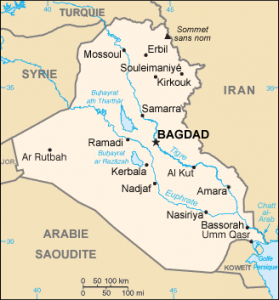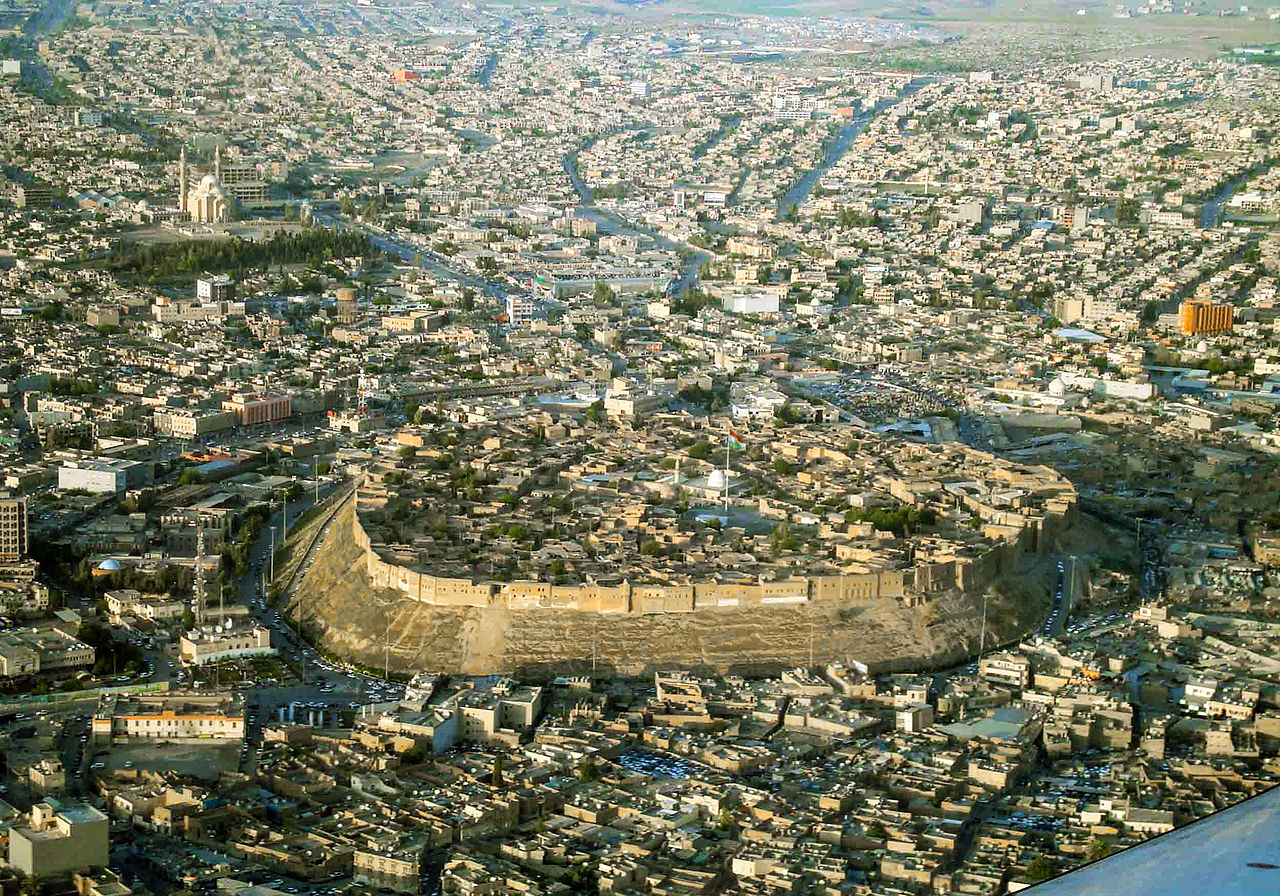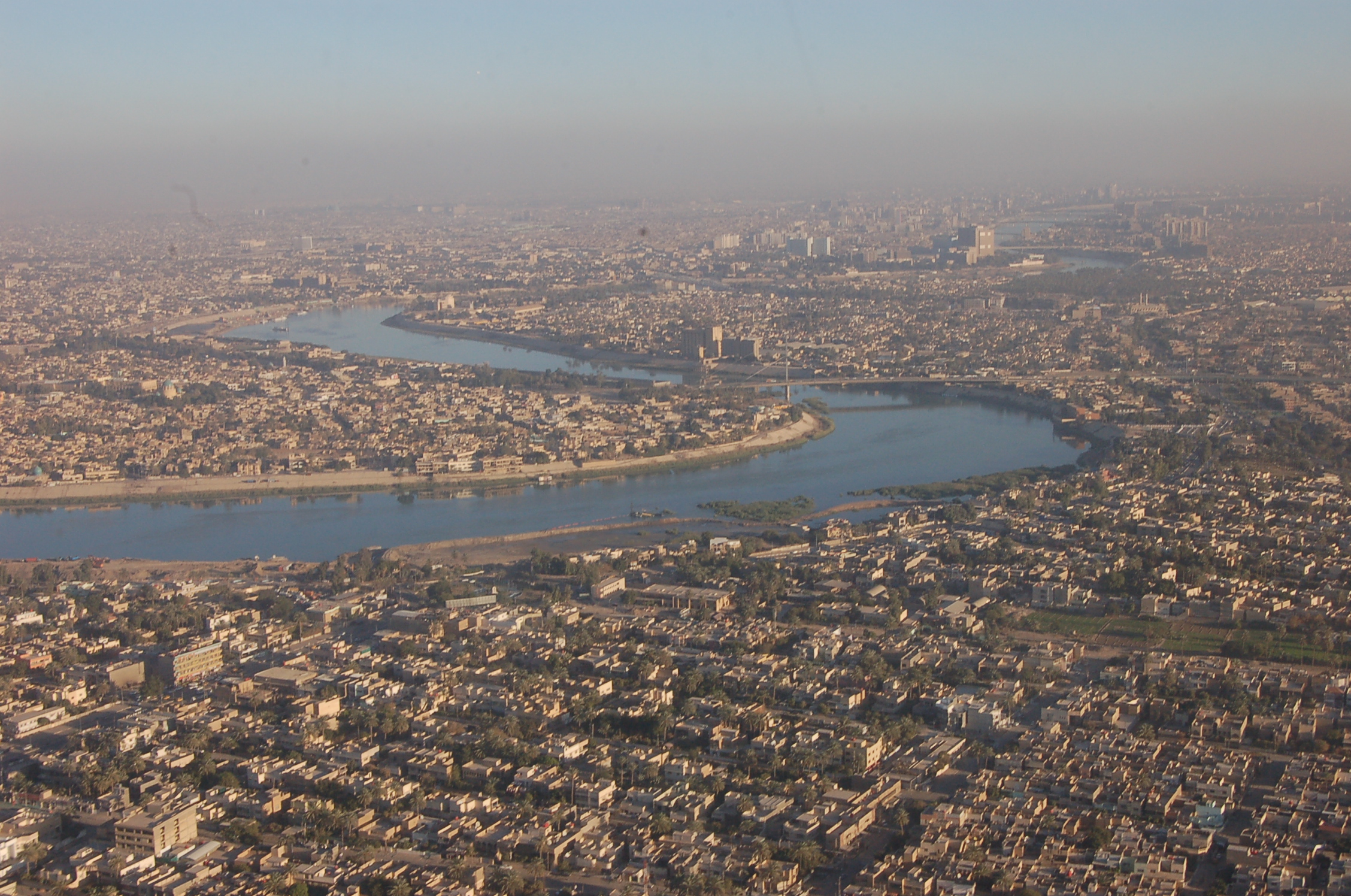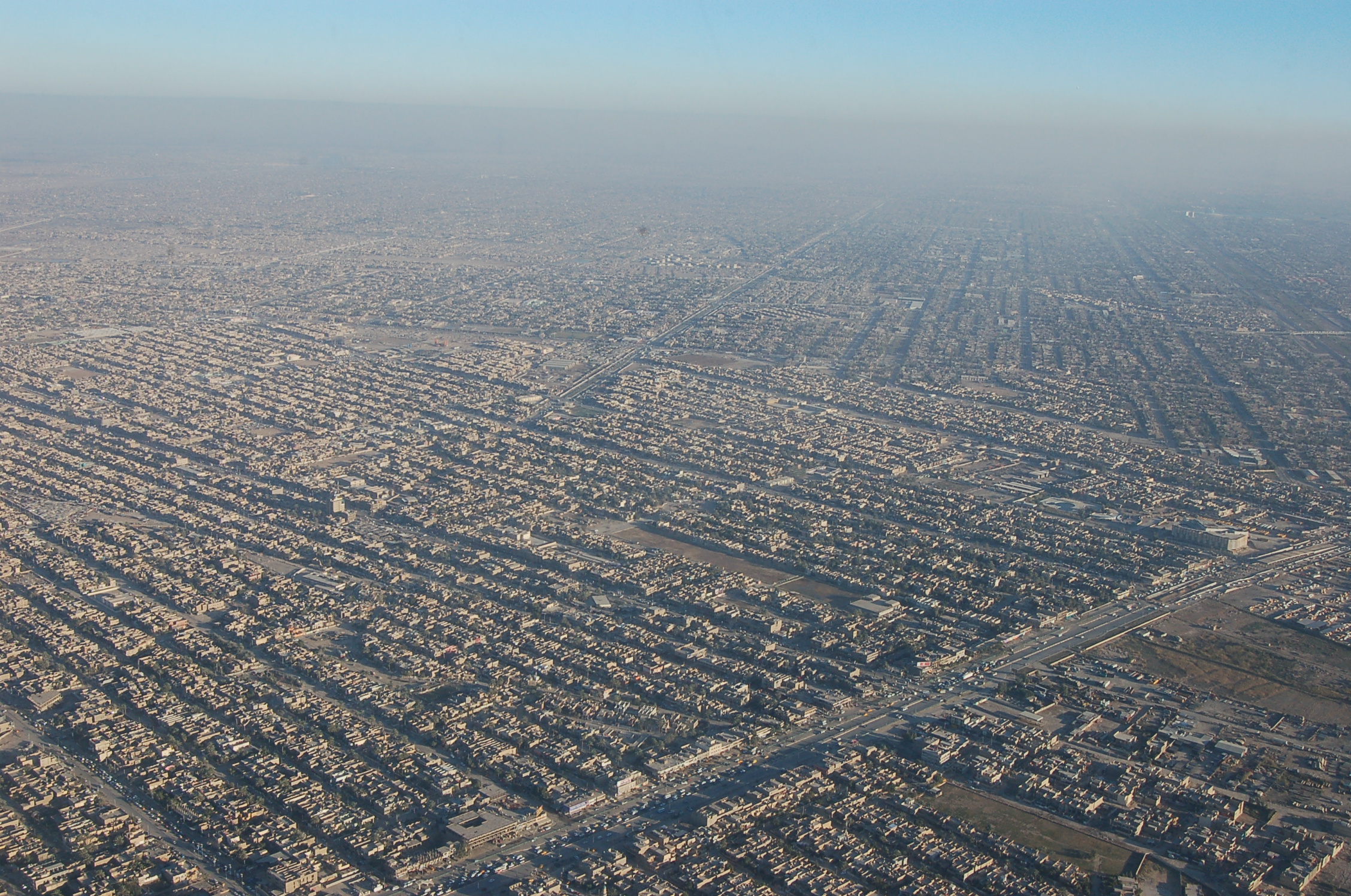
| Official name | Republic of Iraq |
| Name in local language | جمهورية العراق (ar) ; كۆماری عێراق (ku) |
| Continent | Asia |
| Subcontinent | Western Asia |
| Population (ranking: 39e) | 38,124,182 inhabitants (2018) |
| Population growth | 2.56 % / year |
| Area | 435,052 km² |
| Density | 89.63 inhabitants / km² |
| GDP (ranking: 51e) | 225.914 billions $USD (2018) |
| GDP/capita (ranking) | 5,878 $USD (2018) |
| GDP growth | 0.60 % / year (2018) |
| Life expectancy (ranking) | 70.50 years (2018) |
| Birth rate | 30.40 ‰ (2016) |
| Fertility rate | 4.00 children / woman (2016) |
| Death rate (ranking) | 5.40 ‰ (2016) |
| Infant mortality rate (ranking) | 30.60 ‰ (2016) |
| Literacy rate | 81.54 % (2015) |
| Official languages | Arabic, Kurdish |
| Currency | Iraqi dinar (IQD) |
| HDI (ranking: 160e) | 0.689 / 1 (2018) |
| EPI (ranking) | 43.20 (2018) |
| Government | Federal parliamentary republic |
| Head of State | President Barham Salih |
| National Day | 9 April (fall of Baghdad) |
| ISO Codes | IQ, IRQ |
| Demonym | Iraqi |
| Tourists (ranking) | 892,000 people (2013) |

Iraq is a country in West Asia, or the Near East, located in the north of the Arabian Peninsula. It is located west of Iran, northeast of Jordan, east of Syria, northwestern Kuwait, northeastern Saudi Arabia, and southeastern from Turkey. Iraq occupies a central position in the region and is rich in natural resources, mainly oil and gas, of which it has some of the largest reserves in the world. He is a member of OPEC.



Due to the conflict in Iraq, some large cities have been largely evacuated by the population, including Mosul. Many refugees have swelled the ranks of other major cities, including Baghdad, Basra, Erbil and Sulaymaniyah. The demographic statistics below are estimates, as the situation on site is too confusing to collect the information correctly.
See all related maps or articles
Urban areas (2015)
| Urban areas | Population |
|---|---|
| Baghdad | 13,034,225 inhabitants |
| Basra | 3,802,881 inhabitants |
| Erbil (Arbil) | 1,751,636 inhabitants |
| Nadjaf | 1,389,537 inhabitants |
| Kirkuk | 1,255,927 inhabitants |
| Kerbala Maps: | 1,151,150 inhabitants |
| Hilla | 970,141 inhabitants |
| Diwaniya | 900,927 inhabitants |
| Nassiriya | 860,235 inhabitants |
| Sulaymaniyah | 851,143 inhabitants |
| Mosul | 721,096 inhabitants |
| Amara | 550,542 inhabitants |
| Kut | 509,201 inhabitants |
| Bakouba | 487,674 inhabitants |
| Dahuk | 479,587 inhabitants |
| Ramadi | 465,853 inhabitants |
| Samawa | 420,000 inhabitants |
| Samarra | 348,700 inhabitants |
| Falloujah | 326,471 inhabitants |
| Tikrit Maps: | 185,000 inhabitants |
| Umm Qasr | 122,154 inhabitants |
See all urban areas
Administrative divisions
| Provinces | Population | Area |
|---|---|---|
| Al-Anbar | 1,675,600 inhabitants | 137,808 km² |
| Al-Muthanna | 917,750 inhabitants | 51,740 km² |
| Al-Qadisiyya | 1,320,300 inhabitants | 8,153 km² |
| An-Najaf | 1,477,248 inhabitants | 28,824 km² |
| Arbil | 2,009,637 inhabitants | 14,873 km² |
| Babil | 2,000,000 inhabitants | 5,119 km² |
| Bagdad | 8,753,873 inhabitants | 4,555 km² |
| Bassorah (Al-Basra) | 4,700,000 inhabitants | 19,070 km² |
| Dahuk | 1,423,114 inhabitants | 10,956 km² |
| Dhi Qar | 2,040,126 inhabitants | 12,900 km² |
| Diyala | 1,548,500 inhabitants | 17,685 km² |
| Halabja | 102,802 inhabitants | 889 km² |
| Karbala | 1,378,000 inhabitants | 5,034 km² |
| Kirkouk | 1,515,600 inhabitants | 9,679 km² |
| Maysan | 1,412,234 inhabitants | 16,072 km² |
| Ninive | 3,524,300 inhabitants | 37,323 km² |
| Saladin (Salah ad-Din) | 1,509,200 inhabitants | 24,363 km² |
| Souleimaniyé (As-Sulaymaniya) | 1,936,883 inhabitants | 20,144 km² |
| Wasit | 1,457,000 inhabitants | 17,153 km² |
